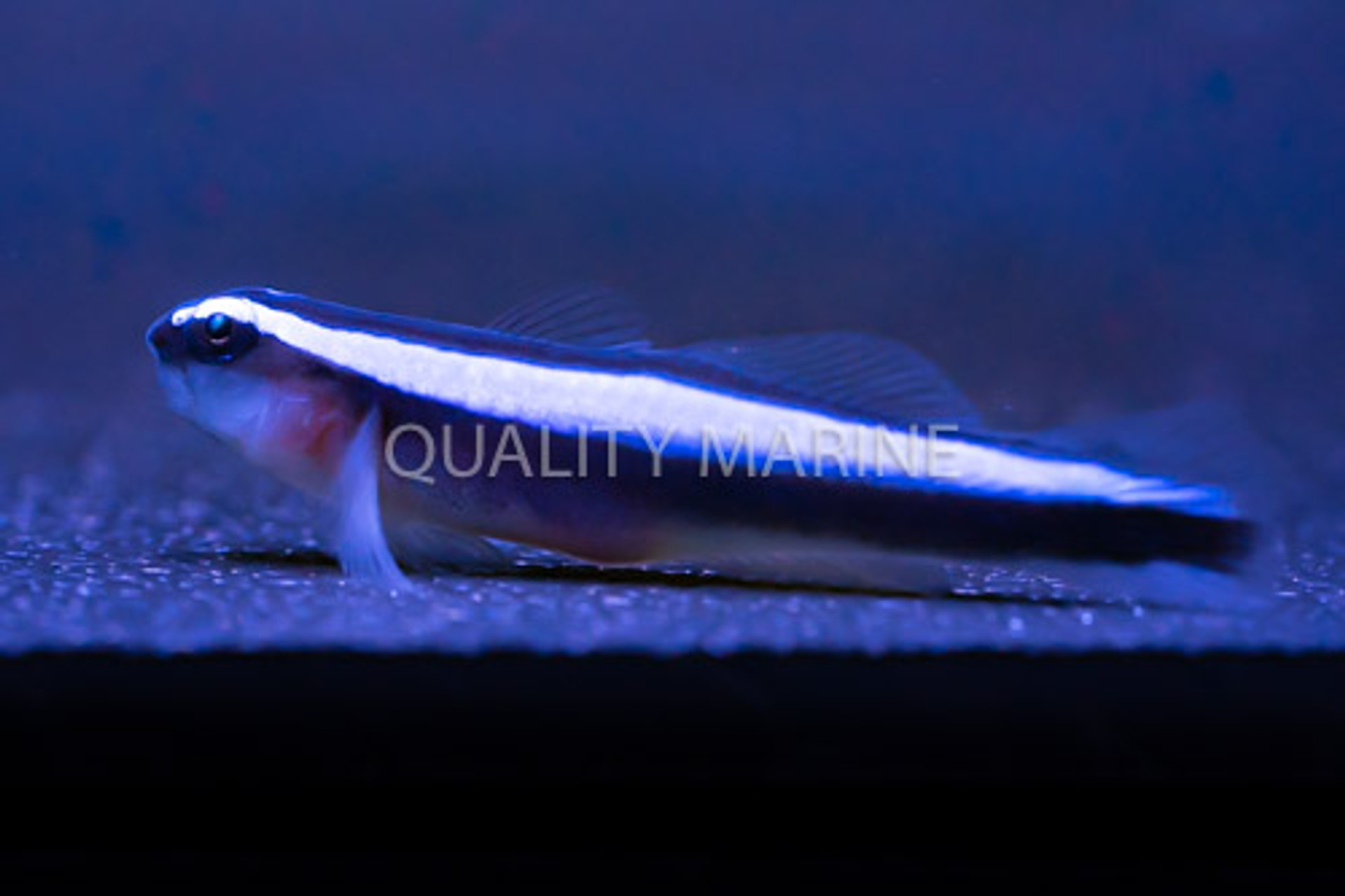The Blue Neon Goby

Gobies make up the largest family of fish in our oceans (Gobiidae), probability alone makes many of these ideal fish candidates for captivity. From filefish to diamond gobies and prawn gobies, there are tons of great choices for home aquaria. That being said, there is one, in particular, that is ideal for most if not all applications, ecological, resilient, and economical; the blue neon goby (Elactinus oceanops). This fish has all of the check marks in the most critical areas. It's active, easy to feed, peaceful with others, does well in groups, and comes in a very manageable size, topping out at about 2" (~5cm).
It's easy to see where this fish gets its name. The horizontal blue stripe across the eyes, head, and body reflects light, making it easy to identify this smaller species even from a distance. This may seem like an odd adaptation for a small group of fish, but it is quite useful in getting them an easy meal on the reef. As you may have guessed, this display attracts a more substantial amount of fish, not to feed on the neon goby, but to visit their cleaning stations. Much like the cleaner wrasses, genus Labroides, attend to other reef dwellers removing dead tissue and parasites, so does the neon goby. Even predatory fish such as the Grouper will allow these compact fish to swim within their gills and mouths to allow them to perform cleaning services.
There are a few factors that make the neon goby much more desirable than the common cleaner wrasse. As mentioned above, the neon goby can be produced in mass quantities via aquaculture, whereas the common cleaner wrasse typically collects from their cleaning stations on the reef. The cleaner wrasse also adapts rather poorly to captivity in comparison to even wild blue neon gobies, let alone captive bred specimens. Those born in captivity are incredibly resilient, making the neon goby ideal not just for confinement but suited well to the beginner or novice aquarist. If it isn't clear yet, this fish is an excellent choice for your first marine specimen.
Captive bred blue neon gobies also adapt rather quickly to prepared food fare, whereas cleaner wrasses derive most of their diet from cleaning duties and don't supplement it with as much zooplankton as the neons do. The track record of the aquacultured blue neon goby versus that of the wild collected cleaner wrasse, even those harvested sustainably, is night and day with the goby being the clear victor.
Due to getting no larger than 2" (~5cm), the neon goby makes an ideal display in pico or nano aquaria. It is, however, still active enough that it makes a beautiful display in larger aquariums in groups where it has more space to set up cleaning stations. While they do well alone, displaying them in pairs to groups as large as 5 or 7 is quite easy and makes a stunning display. Unlike many other gobies, such as those in the watchman group, they only remain cryptic upon initial introduction to the aquarium and will routinely swim up into the water column for both food and to perform their cleaning duties.
If you plan to include neon gobies in a large display with a more boisterous fish, most recommended that you first introduce them as they are less likely to be seen as food and will be more active. New and especially captive bred specimens may not take to their cleaning duties immediately after introduction. Even if they do pick up their new responsibilities quickly, you should supplement their diet with meaty marine foods. Frozen Calanus, enriched baby brine, small fish roe (eggs from mullets or capelins for example), prawn roe and mysis are all great choices. While your new goby should take to these foods rather quickly, you can also assist their adjustment to your tank by preemptively adding live food cultures such as tigrio copepods.
Healthy and happy neon gobies will eventually spawn even in small territories laying eggs over a hard surface. While the average aquarist won't be able to raise this species to maturity, the newly hatched young provides an excellent free food source to your corals, small fish and other invertebrates in a mixed reef tank.
On the subject of invertebrates, neon gobies are compatible with all of them, not irritating any at all and making them completely reef safe by any definition of the word. One compatibility issue to note is that bigger crabs are opportunistic omnivores and may take a swipe at weaker or sick and smaller fish. Large invertebrates that possess stinging cells such as carpet anemones and some LPS with huge sweeper tentacles also pose a minor threat, though neon gobies, for the most part, know to avoid these.
Wonderfully rugged in captivity and of utility due to their cleaning behaviors, the underrated neon goby is a solid choice for a diverse array of marine aquarium applications.